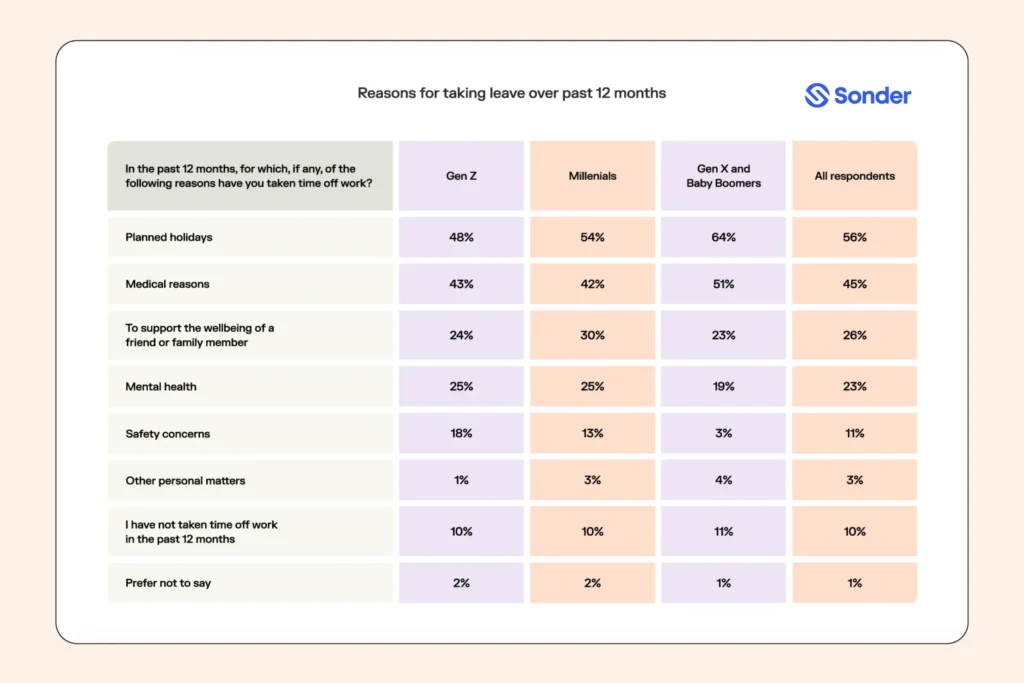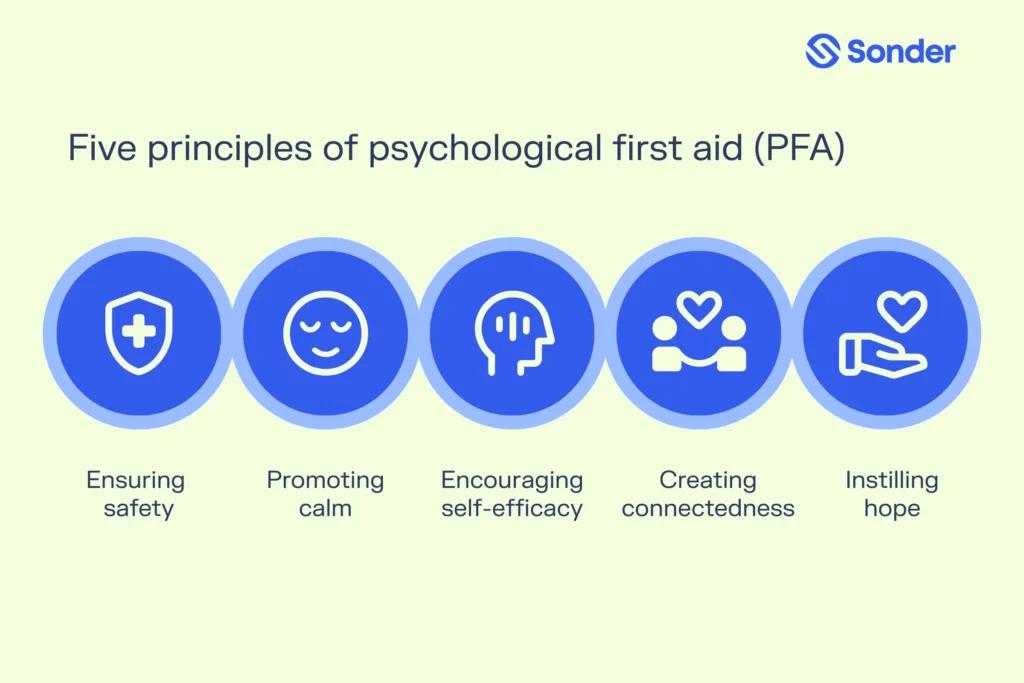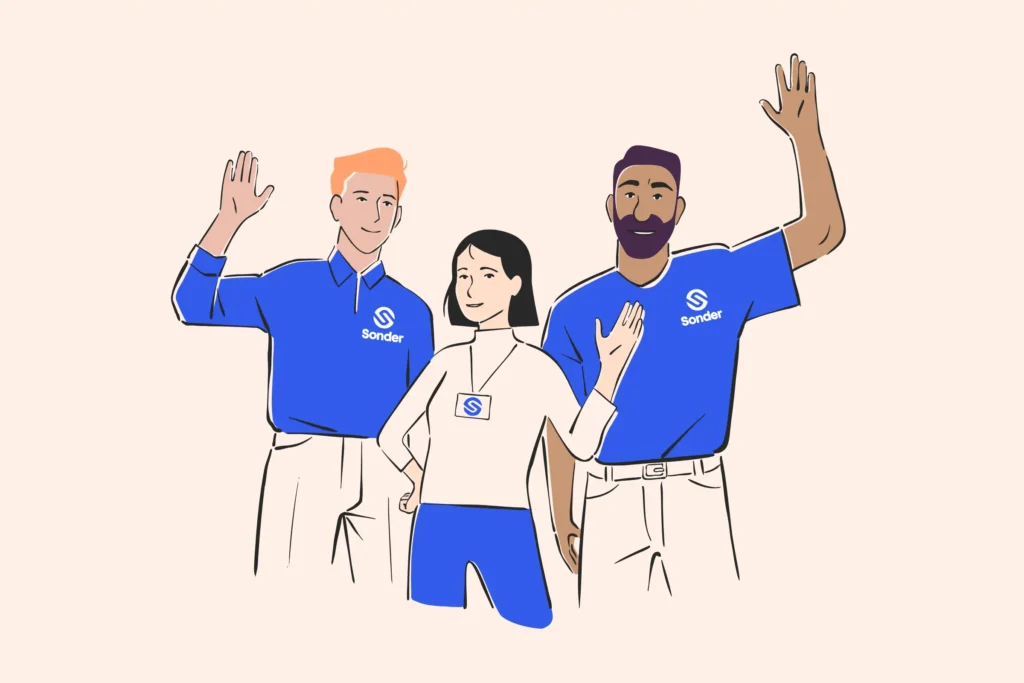Disclaimer: The information contained in this article and on this website is general information only and does not constitute legal advice. Although all efforts have been made to ensure the accuracy and currency of the information presented, Sonder takes no responsibility for any errors or omissions presented. Please contact a legal representative for individual advice.
As a team leader, you carry a lot. Supporting your people, keeping things moving, and trying to do what’s right. Often all at once. It’s not easy, especially when someone is returning to work after a period of extended leave.
Whether they’ve been away due to illness, parental leave, caring responsibilities, burnout, or a personal crisis, these moments can feel complex. You want to get it right. For them, for the team, and for the organisation.
And while policies and processes have their place, they can only go so far. What makes a profound difference is proactive human support. Being present. Listening. Creating space for people to re-enter in a way that feels safe and considered.
When re-entering a workspace after extended leave is handled with care, it can strengthen trust, culture, and retention in ways that policies alone cannot. So let’s take a closer look.

The cost of return-to-work transitions that miss the mark
Returning to work after extended leave isn’t one-size-fits-all. The reasons people step away from work are deeply personal and varied: grief after losing a loved one, recovering from a mental or physical illness, escaping traumatic situations, caring for a newborn or ill family member, or recovering from work-related burnout.
But even with the best intentions from an organisation, many employees can return to work with little preparation or meaningful support. Often, they’re welcomed back warmly, but then expected to pick up where they left off.
“It’s hard to perform at your best if you have concerns about your safety at work or at home.”
CEO and Co-Founder at Sonder
And it’s not just the individual that’s impacted. Poor return-to-work practices can have a ripple effect through the entire organisation. When a person returns unsupported, it can create pressure points across teams, productivity, and amplify stress for others.
There are both direct and indirect costs of employees returning to work without the right support in place:
| Direct costs | In-direct costs |
| A rise in absenteeism and presenteeism from the impacted employee A heightened risk of workers’ compensation claims A rise in employee attrition and turnover | Reduced morale and productivity from colleagues taking on additional work and duties Risk of burnout and attrition of colleagues taking on extra work Increased time and costs of hiring substitute workers |
Mental illness alone is now the leading cause of long-term absence in Australian workplaces and costs the economy around $12 billion a year. According to Sonder’s Safety Gap Report, 23% of workers have taken time off work for mental health reasons in the past 12 months.
These transitions aren’t isolated—they’re tied to broader wellbeing. So, how employers respond will not only shape an employee’s recovery but also the business outcomes.

When support falls short, so does business
The costs of inadequately supporting employee transitions aren’t just emotional—they’re also financial, reputational, and operational. According to various sources explored in Sonder’s management support guides, the risks include:
- Turnover and lost talent: Poor wellbeing can be costly. Replacing a single worker can cost up to 33% of their annual salary. Factor in recruitment, onboarding, and lost knowledge, and the costs can quickly skyrocket.
- Absenteeism and presenteeism: Australian businesses lose $35 billion annually to absenteeism and a further $34 billion to presenteeism (when employees show up to work unwell or disengaged, and perform below capacity).
- Psychosocial hazards and burnout: When psychosocial risks—like workload pressure, poor management support, or workplace conflict—go unmanaged, they can quickly escalate into health issues and a toxic workplace culture.
- Legal and reputational risks: Failing to support a return from stress leave, particularly when the stress was caused by work-related factors such as bullying or burnout, can even expose businesses to legal action and reputational damage.
It’s clear to see that it is a ripple effect. If an employee returns and is unsupported, they can become disengaged, and that energy spreads through the team, impacting performance, culture, and retention.
Good intentions are only the start
While most organisations have return-to-work policies, many underestimate the need for human-centred support to guide people through complex, often vulnerable transitions.
Managers are typically the first line of contact, but without the right training, tools, or clear pathways, they’re rarely equipped to provide the level of care employees need.
The result? A disconnect between policy and experience. Research shows 85% of employees who told their workplace they needed support said they didn’t receive enough help, but it’s not always because managers don’t care. Often, leaders are untrained, overwhelmed, or simply unaware of how to help.
“Often, when you've got a really lean management team, they tend to overextend in an area beyond their expertise. Employees don't get qualified care, and overworked managers become more stressed. This can really compromise outcomes.”
Account Executive, Sonder
When professional support isn’t available or accessible, managers can unintentionally become “accidental counsellors.” That might work in the short term, but it places emotional strain on both sides, especially when employees are dealing with complex or highly sensitive situations such as grief or trauma.
And poor support isn’t just a missed opportunity, it’s a psychosocial hazard. Prolonged or repeated exposure to unclear guidance, emotional burden, or a lack of empathetic leadership can take a toll on both managers and employees.
“If work is exhausting people to the point that they’re using their time off to recover, you might have a burnout culture.”
Organisational Psychologist
What good support actually looks like
So, what are some effective employee reintegration strategies? Here are three practical tips to ensure a successful transition for your people:
1. Pre-return check-ins that are human, not procedural
While managers shouldn’t be expected to become counsellors, they can play an important role in ensuring team members feel supported and able to perform at their best by leading with empathy and open dialogue.
During pre-return check-ins, leaders can focus on the person, not just the role. A manager might ask open-ended questions such as:
- “How are you feeling about coming back?”
- “What support would help you feel comfortable and confident in your return?”
- “Are there any challenges about returning to work that are front of mind?”
2. Structured re-entry with built-in flexibility
Transitioning back doesn’t have to be all-or-nothing. Rather than expecting an employee and the wider team to return to normal, you might consider discussing:
- A phased return: starting part-time and moving into full-time over a period. A great example of this is often with return to work parents. It can be wise to offer keeping-in-touch (KIT) days. Under the Fair Work Act, employees can access up to 10 keeping in touch days during their period of unpaid parental leave.
- Adjusted workloads: such as tasks that require a lower cognitive load or removing people management from their responsibilities, while they settle back in.
- Remote options: to reduce overwhelm and allow for personal space while they navigate vulnerable emotions.
Let’s consider a hypothetical scenario
Elodie, who leads a hospitality group, understands that reentering work doesn’t need to be an all-or-nothing event. When one of her senior team members, David, was diagnosed with a serious illness, Elodie made it a point to stay in touch. She let him know she was thinking of him, and she asked how he’d like to be kept in the loop about work. David preferred to receive occasional, non-urgent emails. This allowed him to check in on his own terms.
When David was ready to return, Elodie didn’t just hand him a re-entry policy. She scheduled a one-on-one meeting to discuss his needs and concerns. They created a gradual return plan together, starting with a few shorter days a week and building up to his regular hours.
David later shared, “That first conversation with Elodie was so important. She listened to me and made me feel like my health was the priority. Knowing I had a gradual plan in place and that the team was ready to support me made my return to work feel like a positive step forward, not an overwhelming challenge.”
3. Ongoing support beyond week one
Too often, support fades after the first few days back at work. To ensure ongoing care and connection, employers should establish meaningful touchpoints, such as:
- Regular 1:1s and wellbeing check-ins: These signal continued support, create space to surface challenges early, and reinforce a human-centred approach to re-entry.
- Flexible arrangements for professional care: Encouraging employees to access professional help, and offering flexibility with work hours to do so, helps normalise care-seeking behaviour.
- Tech-enabled wellbeing: Platforms like Sonder give managers a way to support without playing the role of counsellor. With access to assessments and on-demand care, employees can take proactive control of their wellbeing.
“Employers should encourage employees to use their allotted time off and consider flexible work schedules to reduce fatigue and promote recovery.”
Chief People Officer, Sonder

Care that doesn’t clock off: 24/7 support matters
Employees are people with full lives, and the challenges they face outside work don’t just stay there. A 3 am anxiety spiral, a pre-shift argument, or a sick child at dawn can all impact how someone shows up during their work hours, making round-the-clock support a game-changer.
“There is no magical fence that keeps everything in your home life out that side of the fence and everything in your work life in this side of the fence.”
Group Director, Safety, Health and Wellbeing, Woolworths Group
Sonder’s platform provides 24/7 access to medical, mental health, and personal safety support, so employees can get timely help without the stress of long GP waits or out-of-pocket costs. From immediate care to trusted guidance, support is available anytime it’s needed.
And the benefits go both ways. Early intervention helps prevent issues from escalating, reducing absenteeism, improving recovery times, and keeping people well and present at work.
Organisations like Woolworths, PwC, and Team Global Express are leading the charge with digital health solutions that integrate mental, physical, and personal safety support in one place.
“The access block for medical and mental health care is the most pressing issue of our time… people are increasingly looking for alternative ways to access professional care.”
Sonder empowers people to:
- Get timely, clinically informed care
- Access 24/7 support—no matter the time or issue
- Reduce the stigma of help-seeking
- Feel safe, seen, and supported throughout transitions
It also helps managers take action without taking on the emotional burden of being “accidental counsellors.” With real-time referrals and resources, they can offer meaningful support with confidence.

It’s time to rethink return-to-work support
As Australia grapples with rising healthcare costs, long GP waitlists, and increased burnout, employers have an opportunity to get proactive ith return-to-work support.
A genuine culture of care isn’t just about having the right policies—it’s about putting them into practice with empathy, flexibility, and tools that work in real life. It’s time to:
- Close the gap between policy and lived experience
- Equip managers with training and resources
- Offer care that’s immediate, accessible, and effective
- Embrace shared responsibility for wellbeing
Because when we get return-to-work right, we don’t just help employees heal, we build stronger, more resilient teams and workplaces.
If your organisation is ready to take a more proactive approach to staff wellbeing, Sonder is here to help. With 24/7 access to medical, mental health, and personal safety support, we empower people to feel safe, supported, and ready to thrive, whatever life throws at them.
Ready to see Sonder’s features in action? Try it now and see for yourself.



